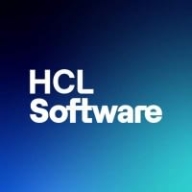

BigFix and Deep Instinct Prevention Platform compete in endpoint security. BigFix has the upper hand in pricing and support, while Deep Instinct Prevention Platform stands out for its advanced features.
Features: Users appreciate BigFix for its comprehensive patch management, automation capabilities, and detailed reporting. Deep Instinct Prevention Platform is valued for its deep learning threat detection, real-time prevention, and minimal system performance impact. BigFix is known for strong management and reporting features, while Deep Instinct provides advanced AI-driven security.
Room for Improvement:Users suggest BigFix needs enhancement in cloud integration, overall speed, and modernization. Deep Instinct Prevention Platform requires better compatibility with legacy systems, more intuitive policy management, and enhanced user-friendliness.
Ease of Deployment and Customer Service: BigFix is noted for straightforward deployment but has mixed reviews on customer service responsiveness. Deep Instinct Prevention Platform faces a steeper learning curve during setup but offers excellent customer support.
Pricing and ROI: BigFix is recognized for accessible initial setup cost and quicker ROI. Deep Instinct Prevention Platform, although expensive upfront, offers significant long-term value due to advanced threat prevention capabilities.
On a scale from one to ten, with ten being the highest quality, enterprise support provides timely responses, typically within four to eight hours.
Technical support from HCL is satisfactory unless there are customization requirements.
Technical support from Deep Instinct Prevention Platform is fantastic.
BigFix requires some minimum configuration requirements.
In addition to reporting improvements, there should be a feature for application control to allow or disallow certain applications from being executed on endpoints.
Building a management console is quick and simple, taking only one to two hours for setup.
BigFix requires some minimum configuration requirements.
The pricing is pretty good and now follows a subscription model similar to SolarWinds, making it easier for customers to subscribe and unsubscribe.
The licensing is very competitively priced, better than all other solutions.
BigFix supports something known as Patch Policies, which allows users to define that whenever critical patches are released, they should get evaluated against machines and automatically deploy them.
I use this mainly to capture inventory for IBM products, and as BigFix was part of IBM, it gets easily integrated with IBM solutions.
The BigFix features that have proven most effective include inventory, software delivery, software distribution, software catalog, and both software and hardware management.
| Product | Market Share (%) |
|---|---|
| BigFix | 1.1% |
| Deep Instinct Prevention Platform | 0.7% |
| Other | 98.2% |


| Company Size | Count |
|---|---|
| Small Business | 30 |
| Midsize Enterprise | 12 |
| Large Enterprise | 66 |
| Company Size | Count |
|---|---|
| Small Business | 10 |
| Midsize Enterprise | 4 |
| Large Enterprise | 5 |
HCL BigFix is a powerful patch management tool that enables organizations to simply control their patch management operations. It is designed so that IT security and operations teams can collaborate in the most effective way possible. Users that employ BigFix can find and fix issues with their endpoints faster than those that employ its competitors. It comes with thousands of security checks that can be deployed quickly and easily. These enable users to safeguard themselves from a wide variety of digital threats.
HCL BigFix Benefits
Some of the ways that organizations can benefit by choosing to deploy HCL BigFix include:
BigFix Features
Reviews from Real Users
HCL BigFix is a highly effective solution that stands out when compared to most of its competitors. Two major advantages it offers are its auto-patching capability and its user-friendly tools.
Santhosh K., the chief executive officer of Catnip Infotech Private Limited, writes, “The second valuable feature is, BigFix also has an auto patch updating feature, where the latest patches, and what is required for my system are automatically downloaded and kept ready for me. The solution applies the patch and notifies me after applying the patch. BigFix also gives me a ping saying that I should reset my system within a certain period of time, while the patch is being applied. Let's say, the patch is being applied and if there's an issue, the solution can revoke the applied patch, and revert back to the old state.”
Benedikt S., an application administrator, says, “It's very straightforward. The usability is very close to everyday technical tools that you use as a systems administrator. So it's quite user-friendly.”
Deep Instinct PREVENTS >99% of UNKNOWN threats like ransomware and zero-days before they land inside your environment – not after. With both an agentless and agent-based approach, we ensure file-based and fileless attacks are prevented. To achieve this, Deep Instinct is pioneering the use of deep learning AI to prevent threats in <20ms, without requiring calls to the cloud for threat intelligence. Our ability to scale to the needs of the enterprise is unprecedented as is our delivery of the industry’s lowest false positive rate of <0.1%.
The Deep Instinct Prevention Platform combines industry-leading static analysis based on the only deep learning framework dedicated to cybersecurity and includes two solutions:
To learn more, visit: https://www.deepinstinct.com.
We monitor all Endpoint Protection Platform (EPP) reviews to prevent fraudulent reviews and keep review quality high. We do not post reviews by company employees or direct competitors. We validate each review for authenticity via cross-reference with LinkedIn, and personal follow-up with the reviewer when necessary.